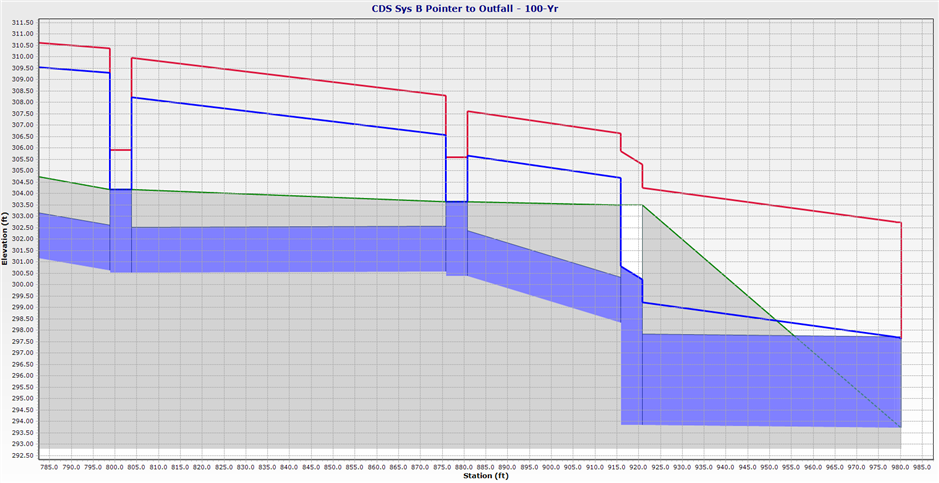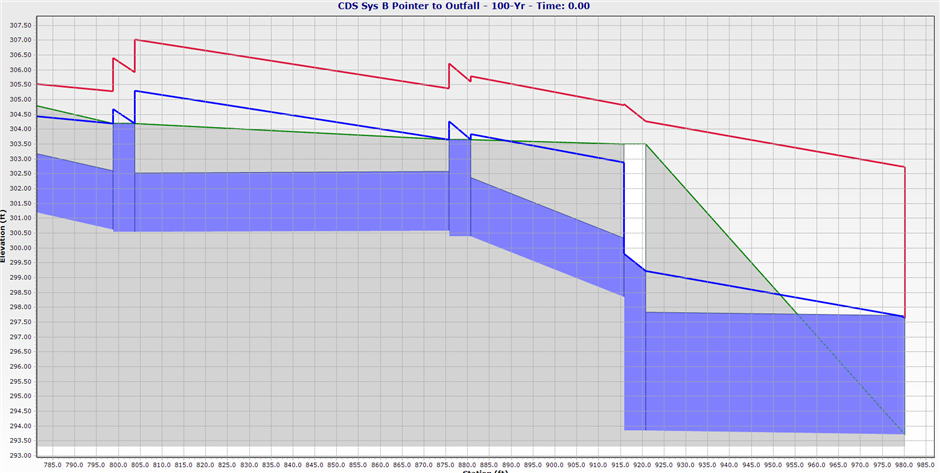| Applies To |
|
| Product(s): |
StormCAD, SewerGEMS, CivilStorm |
| Version(s): |
10.00.xx.xx, 08.11.03.xx and later |
| Area: |
Modeling |
| Original Author: |
Scott Kampa, Bentley Technical Support Group |
Problem Description
When computing a model, there are structures that are overflowing. The hydraulic grade results are significantly different between HEC-22 (Third Edition) headloss method and the HEC-22 (Second Edition) headloss method. Why?
Steps to Resolve
With the Third Edition of the HEC-22 Energy method, the results for Hydraulic Grade (In) and Hydraulic Grade (Out) for a catch basin or an unbolted manhole must be reported as a value of rim elevation or less. For that reason, when there is flooding at catch basin or unbolted manhole, the hydraulic grade will appear to be flat across the length of the structure in a profile.Because the hydraulic grade is flat, the headlosses in the structure will be reported as zero, where a headloss was reported with the HEC-22 2nd edition Energy Method.

HEC-22 2nd Edition

When a structure overflows, the headloss in the structure becomes irrelevant.
The most important takeaway from overflows happening at nodes in your model is that the system is undersized and that this needs to be resolved. Once the structure is no longer flooding, you would see headlosses reported across the structure. For information on system overflows and structure flooding with StormCAD and the StormCAD solver, please refer to this link.
See Also
Inlet flooding in HEC-22 Third Edition, but not with HEC-22 Second Edition
What are the differences between HEC-22 3rd edition and HEC-22 2nd Edition?